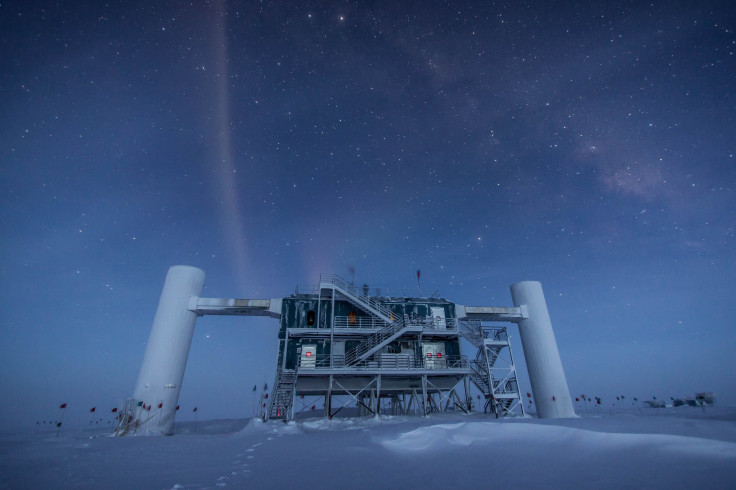Extraterrestrial Neutrinos Found In South Pole May Solve Mysteries About Cosmic Particle Accelerators

An international team of researchers working at the IceCube Neutrino Observatory, located more than a mile beneath the surface of the South Pole, has discovered the first “solid” evidence of extraterrestrial high-energy neutrinos, which come from cosmic particle accelerators beyond our solar system.
According to the researchers, the IceCube observatory has detected 28 extremely high-energy particle events from outer space that can provide astronomers with an entirely new perspective on the universe. The high-energy neutrinos were found in data collected from May 2010 to May 2012.
“This is the first indication of very high-energy neutrinos coming from outside our solar system with energies [that are] more than one million times those observed in 1987 in connection with a supernova seen in the Large Magellanic Cloud,” Francis Halzen, the principal investigator of IceCube and a professor of physics at the University of Wisconsin–Madison, said in a statement. “This is the dawn of a new age of astronomy.”
Although there are particle accelerators in our universe that are 40 million times more powerful than the Large Hadron Collider, or LHC, at CERN, which is located in Switzerland, scientists know very little about them and where they are located. However, the new findings from IceCube are expected to provide scientists with a compass to track the cosmic accelerators and solve the mysteries about them.
The new results from IceCube, published in the journal Science on Friday, showed that two of the 28 events are the highest energy neutrinos ever reported, and they have been named Bert and Ernie. The researchers believe that somewhere in the universe, something is accelerating particles to energies greater than 50 trillion electron volts (TeV) and, in the cases of Bert and Ernie, exceeding one quadrillion electron volts. By comparison, the LHC accelerates protons to approximately four TeV in each of its beams.
According to scientists, the massless neutrinos can provide information about the workings of the highest-energy and most distant phenomena in the universe. While the vast majority of neutrinos, which pass through the Earth every second, originate either in the sun or in the planet’s atmosphere, there are far rarer neutrinos that come from the outer reaches of our galaxy or beyond.
These outer-space neutrinos, researchers said, have long been theorized to provide insights into the powerful cosmic objects -- supernovas, black holes, pulsars, active galactic nuclei and other extreme extragalactic phenomena -- that may explain the origins of high-energy cosmic rays.
In analyzing more recent data from IceCube, Berkeley Lab’s Lisa Gerhardt discovered another event that was almost double the energy of Bert and Ernie. Dubbed “Big Bird,” the new event was considered to be the most energetic event in IceCube yet.
The IceCube observatory consists of 5,160 basketball-sized light detectors called Digital Optical Modules, or DOMs. It was designed to accomplish two major scientific goals -- measure the flux, or rate, of high-energy neutrinos and try to identify some of their sources.
“IceCube is a wonderful and unique astrophysical telescope -- it is deployed deep in the Antarctic ice but looks over the entire universe, detecting neutrinos coming through the Earth from the northern skies, as well as from around the southern skies,” Vladimir Papitashvili of the National Science Foundation Division of Polar Programs, said.
© Copyright IBTimes 2025. All rights reserved.




















